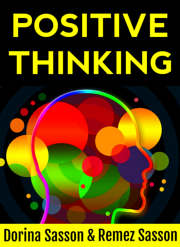
Financial independence is often a dream for those working in creative roles. However, in fields driven by passion and innovation, securing a stable income can be challenging.
The good news is that by exploring diverse strategies, creative professionals like artists, writers, and musicians can unlock sustainable revenue streams to reach financial independence – while nurturing their creative endeavors.
Harnessing Digital Platforms for Passive Income Streams
Digital platforms open doors to passive income for creatives. Take musicians, for example.
Browse our online courses on meditation, positive thinking, overcoming procrastination, confidence, and freedom from distractions.
They can upload tracks using distribution services, such as this music distribution iOS app, and their work can instantly reach global audiences on leading sites like Spotify and Apple Music.
Royalties will trickle in as listeners stream their songs, which will contribute to the long-term goal of financial independence.
Visual artists can also benefit by selling prints through online marketplaces like Etsy or Redbubble without holding inventory.
And writers can use platforms like Amazon Kindle Direct Publishing to distribute ebooks worldwide with minimal overheads.
These avenues allow creative individuals to reach broader markets and generate steady income streams without the need for constant active participation.
Diversifying these efforts increases financial stability and sets the stage for sustained success in creative fields.
Leveraging Social Media for Financial Gain
Social media is a goldmine for creatives seeking financial independence. By building an authentic online presence, artists and designers can turn followers into customers or patrons.
Consider these possibilities:
- Cultivate a loyal community through engaging content.
- Offer exclusive content to subscribers via platforms like Patreon.
- Monetize popular posts with affiliate marketing partnerships.
- Promote workshops or online classes directly to your audience.
By sharing their journey and insights, creators will attract like-minded individuals who value their work, leading to increased sales or funding opportunities.
Using analytics tools helps track engagement and refine strategies, maximizing the potential of each post or interaction.
Embracing these digital landscapes allows creatives to transform passion into profit without geographic constraints.
Creating and Selling Digital Products in Niche Markets
Digital products are a flexible revenue source for creatives. Designing items like printable art, ebooks, or digital courses allows artists to tap into niche markets without inventory costs.
Consider graphic designers who create customizable templates or photographers who offer presets that enhance images.
Identifying unique niches-such as retro-style illustrations or meditation guides-can set creators apart from the competition.
Success hinges on understanding target customers and delivering quality content tailored to their interests.
Expanding Revenue with Licensing Opportunities
Licensing offers creatives a path to recurring income by allowing others to use their work legally. Artists, illustrators, and photographers, for instance, can license designs or images for commercial use in various media, such as apparel or advertisements.
Establishing licensing agreements requires a good understanding of intellectual property rights and negotiation skills.
Platforms like Creative Market provide opportunities to showcase licensed work globally, expanding potential reach.
Exploring these avenues not only generates income but also boosts visibility within industry circles.
The key lies in finding reputable partners who align with your creative vision while ensuring fair compensation through well-structured contracts.
Exploring Investment Strategies Suited for Creative Professionals
Investment can be daunting, but it’s often essential for financial independence.
Creatives often face income volatility, so making smart investments is crucial to gain stability and growth.
Start by considering these strategies:
- Explore mutual funds or ETFs with low fees for diversified portfolios.
- Consider investing in peer-to-peer lending platforms offering moderate returns.
Understanding risk tolerance helps tailor investment choices to individual circumstances.
Engaging with online communities focused on financial education provides valuable insights and support.
Investing is not about overnight success; it’s about building wealth over time through informed decisions that align with long-term goals.
This approach empowers creatives to secure their future without compromising artistic pursuits.
Developing a Personal Financial Plan Tailored to Creatives
Creating a personal financial plan is vital for creatives who often experience irregular income.
Start by establishing clear financial goals, such as saving for equipment or funding projects.
Track expenses meticulously to identify spending patterns and areas for savings.
Build an emergency fund covering several months of living expenses to navigate lean periods confidently.
And consider using budgeting apps that offer features like automated expense categorization.
Tailoring your strategy means accommodating creative-specific costs like supplies and marketing while planning retirement contributions through options such as solo 401(k)s or IRAs.
Regularly reviewing and adjusting the plan ensures it remains aligned with changing circumstances and aspirations, nurturing both security and flexibility in the ever-evolving creative landscape.
By utilizing the right strategies, financial independence is within your reach.

